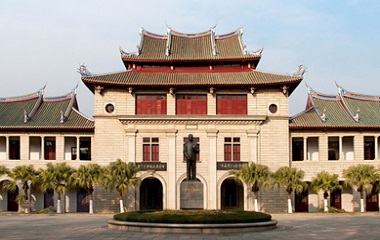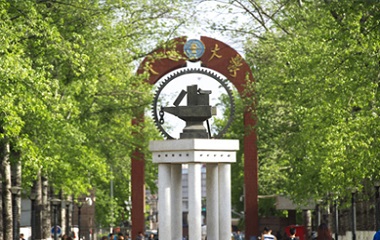[Japan] Fujimura Yuki, Beijing Normal University
Having learned Chinese cuisines from some Chinese cooks, my grandpa, who is a Japanese chef, opened a dumpling restaurant at my hometown. He used to tell me the stories of his Chinese master and his daughter, which I felt lovely. Gradually, I am fond of China.
Ink Painting-like China
I’ve been interested in traditional Chinese arts since I was a little kid and have always expected to pay a visit to China. I like all kinds of Chinese cultures, among them, classic arts are my favorite. Thinking of China, I usually have a scene of traditional Chinese ink painting-like mountains and rivers in my mind.

With this preference of classic arts, and having not been abroad before, I have little idea of modern Chinese culture and customs. While in my study of Chinese, I’ve learned the development and changes modern China has made via different media and social platforms. Last year I watched CCTV’s annual Spring Festival Gala online, in which the traditional Chinese musical instruments performance was so marvelous and charming. At that moment I felt the merging beauty of traditional and modern Chinese cultures, and the ink-painting China images always in my mind had been added with colors and become an even more splendid painting.
Chinese Restaurants in Japan
There are many Chinese restaurants around Ikebukuro of Tokyo, where you would feel like “a Mini-China.” Chinese restaurants have sprouted at almost every Japanese city. Classic Chinese dishes are frequent callers on the dinner table of Japanese people, such as Shredded Pork with Green Pepper and Ma Po Tofu. Some say that the Chinese restaurants in Ikebukuro are identical to the Chinese restaurants because all their chefs and most of the customers are Chinese, which is closer to the authentic taste than other Chinese restaurants in Japan. Meanwhile, eating at these restaurants is a bit challenging to non-Chinese people like me as you could hardly order food if you don’t speak Chinese. Due to the COVID-19 pandemic, I haven’t been to China yet, so I’d like to go to Ikebukuro and feel the atmosphere of the “Mini-China.” Together with my Chinese friends, I once went to a Sichuan cuisine restaurant, I found the authentic Sichuan dishes were spicier than I’d thought. Some dishes were made of ox’s stomachs, while Japanese seldom eat animals’ internal organs. At first I hesitated, but after tasting I found them really delicious. While eating these nice Chinese foods at the “Mini-China,” I could feel the charm of a great country famous for its foods.

Chinese Dumplings and Japanese Dumplings
Through learning Chinese language, I’ve made a Chinese friend. One day, he came to my home city, which is famous for the making of dumplings in Japan, so we went to a dumpling restaurant for dinner. Though having been chatting online almost every day, it’s our first time to meet face to face, and we didn’t know all about each other’s habits. At the dumpling restaurant, he ordered some dumplings with no rice going together, which surprised me a lot, because dumplings are usually served together with rice or ramen at an ordinary Chinese restaurant in Japan and we are used to eat that way, which is difficult to understand for a Chinese people. At this meal I also found that Chinese usually eat boiled dumplings while Japanese often have fried dumplings, another difference between us.

After learning Chinese, I’ve found the cultural charm of modern China. The information people obtained online is usually limited, to better understand a foreign country, learning its language is the best way. Many words and phrases reflect the history and cultural customs of the country. Language could also help broaden a learner’s eyesight. A deft language learner has the advantage of communicating smoothly with locals, feeling the customs and enjoying local foods. In one word, to genuinely understand China, you need to dip into its culture.
The story is from "My Beautiful Encounter with China" Essay Competition organized by the Chinese Service Center for Scholarly Exchanges (CSCSE).










